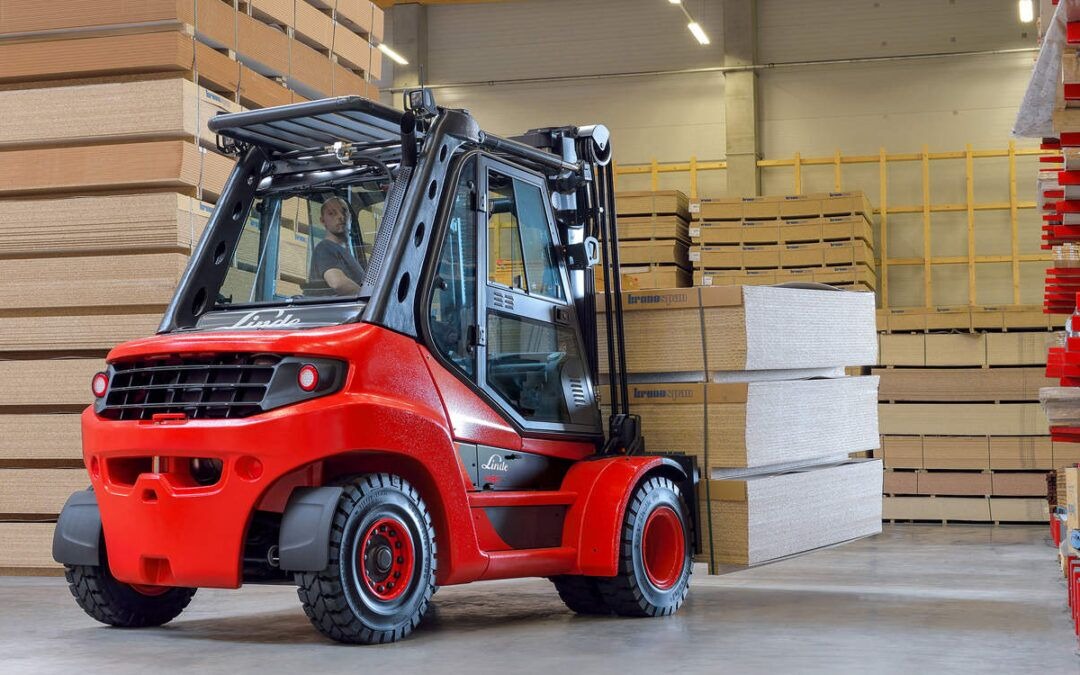In today’s fast-paced industrial and commercial sectors, material handling plays a vital role in operational efficiency. Whether it’s in a warehouse, construction site, or distribution center, the need for reliable equipment is constant. Among the most essential pieces of equipment in any heavy-duty operation are forklifts. However, not every business has the capital or long-term need to invest in a fleet of these machines. That’s where forklift rentals come into play.
Renting forklifts has become a strategic and cost-effective solution for businesses looking to maintain productivity without the financial burden of ownership. Whether it’s to handle a seasonal spike, support a one-time project, or temporarily replace equipment under maintenance, rentals provide flexibility and convenience. In this article, we will explore the advantages of forklift rentals, what to consider before renting, how to determine which type of forklift best suits your needs, and how reliable providers like Tri-Lift Industries help streamline the rental process.
The Benefits of Renting Forklifts
Forklift rentals offer a wide range of advantages that go beyond the obvious cost savings. They give companies the opportunity to scale operations quickly and efficiently, especially when facing sudden demands or short-term projects.
1. Cost-Effective Operation
Purchasing a forklift requires significant upfront investment, not to mention ongoing maintenance, storage, and depreciation costs. Renting avoids these expenses and allows companies to allocate capital elsewhere.
2. Flexibility and Scalability
Business needs can change rapidly. Rentals enable companies to adjust their equipment inventory based on fluctuating workloads without the long-term commitment of ownership.
3. Access to Modern Equipment
Forklift rental providers often maintain a fleet of the latest models. This allows renters to access newer machines with advanced safety and performance features without paying full price.
4. Reduced Maintenance Responsibility
Rental agreements typically include maintenance and repairs. If a unit breaks down, the rental provider handles it—saving you time, money, and hassle.
5. Minimal Downtime
Since most rental companies offer immediate replacements, your operation won’t come to a halt due to equipment failure.
Types of Forklifts Available for Rent
Forklifts are not one-size-fits-all. Different types of lifts serve various purposes depending on the environment, weight load, and lift height required. Knowing the types available will help you make the best decision.
1. Electric Forklifts
These are ideal for indoor use due to their zero emissions and low noise output. Electric forklifts are commonly used in warehouses and retail stores.
2. Internal Combustion Forklifts
Powered by diesel, gasoline, or propane, these forklifts are more suitable for outdoor applications or environments that require heavier lifting.
3. Rough Terrain Forklifts
These are designed for uneven surfaces like construction sites. They come with large, pneumatic tires and a powerful engine to handle rugged conditions.
4. Pallet Jacks and Stackers
Smaller and more compact, these are perfect for moving and lifting pallets in tight indoor spaces.
5. Telehandlers
These are versatile machines with a boom that extends forward and upward, offering great flexibility on construction sites or farms.
Determining Your Rental Needs
Before renting a forklift, it’s essential to assess your specific needs. Making the right choice can prevent equipment damage, delays, and even safety hazards.
1. Load Requirements
What is the maximum weight the forklift needs to lift? Overloading can damage both the machine and the products being moved.
2. Lift Height
How high does the load need to be lifted? Ensure the forklift can reach the necessary heights, particularly in warehouse shelving systems.
3. Operating Environment
Will the forklift be used indoors or outdoors? Is the floor smooth or rough? The environment greatly impacts the type of tires and power source you should choose.
4. Duration of Rental
Know how long you’ll need the forklift. Most rental companies offer flexible terms—daily, weekly, or monthly—so understanding your timeframe can help reduce costs.
5. Operator Requirements
Ensure that whoever will be operating the forklift is trained and certified. Safety should always be a priority.
How to Choose a Reliable Rental Provider
The quality of your rental experience is largely determined by the provider you choose. A reputable supplier ensures you get well-maintained equipment, responsive customer service, and fair terms.
Here are key attributes to look for:
1. Well-Maintained Fleet
Choose a company that regularly services and inspects their machines. You don’t want downtime due to poorly maintained equipment.
2. Transparent Pricing
Look for providers that offer straightforward pricing with no hidden fees. Understand the costs involved in delivery, pickup, fuel, and maintenance.
3. Responsive Support
Ensure that the company offers timely support if issues arise during your rental period. Some providers offer on-call technicians and fast replacements.
4. Customization Options
Some businesses may require attachments like clamps, sideshifters, or fork extensions. A good provider should offer customization to suit your application.
One example of a provider known for reliability and a wide range of forklift options is Tri-Lift Industries. They are known for not only supplying equipment but also for educating clients on what machines will best meet their operational demands. This customer-focused approach makes them a trusted name in the rental industry.
Safety Considerations During Use
Regardless of how short or long your rental period is, safety should always be top of mind. Here are some basic practices to ensure a safe work environment when using rented forklifts.
1. Operator Training
Only certified operators should handle forklifts. Training helps prevent accidents and ensures proper handling of the machinery.
2. Pre-Use Inspections
Before using any rented forklift, perform a visual and operational inspection. Check brakes, steering, tires, lights, and hydraulics.
3. Load Stability
Ensure that loads are evenly distributed and secured. Avoid lifting items that exceed the forklift’s weight capacity.
4. Clear Work Areas
Make sure that paths are free from obstacles. A clean work environment reduces the risk of accidents.
5. Use Proper Attachments
If your job requires specialized attachments, ensure they are compatible and properly installed.
Safety is a priority for leading providers like Tri-Lift Industries, who often include consultation and training support as part of their rental services. This helps clients not only acquire the right equipment but also use it responsibly.
The Cost Factor: What to Expect
Pricing for forklift rentals can vary depending on several factors:
- Type and size of forklift
- Rental duration
- Delivery and pickup fees
- Accessories or attachments
- Insurance and liability terms
On average, daily rentals for small electric models can start as low as $100 per day, while larger rough terrain models may cost upwards of $300 or more. Long-term rentals tend to be more cost-effective, especially for businesses that require consistent usage over several months.
To get the best deal, compare quotes from multiple providers and be clear about your needs. Factor in customer support, maintenance inclusion, and equipment condition—not just the bottom line.
Long-Term vs Short-Term Rentals
The choice between short-term and long-term rental depends largely on your operational requirements. If you experience seasonal surges—such as retail businesses during the holidays—a short-term rental is ideal. On the other hand, construction sites or ongoing warehouse operations may benefit from long-term rental agreements with volume discounts and added perks.
Some businesses choose to maintain a core fleet of owned forklifts and supplement their operations with rentals during busy periods. This hybrid model maximizes efficiency while keeping costs predictable.
Final Thoughts
Forklift rentals are more than a temporary solution—they’re a strategic tool for businesses that value efficiency, safety, and adaptability. Whether your needs are driven by seasonal demand, unexpected equipment failure, or short-term projects, rentals allow you to keep operations moving without long-term commitments or massive capital investments.
Partnering with a reputable provider can simplify the entire rental process. Companies like Tri-Lift Industries offer more than just equipment—they bring industry expertise, customer-focused service, and peace of mind. With a well-maintained fleet and knowledgeable support, they help businesses find the right solution tailored to their operational goals.
By understanding your needs, doing your research, and choosing the right rental partner, you can make informed decisions that drive productivity and success—one lift at a time.








